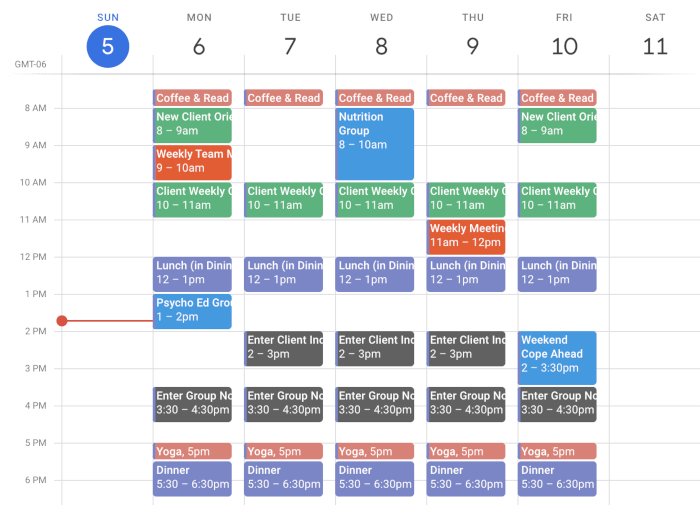If you’re an ADHD individual who’s ever gazed at a conventional planner feeling utterly overwhelmed, you’re certainly not alone. That meticulously designed, color-coded schedule that functions seamlessly for neurotypical minds? It might as well be written in hieroglyphics for many of us. But here’s the crucial insight: time blocking for ADHD isn’t about constraining your brain into an inflexible container—it’s about establishing a responsive framework that genuinely harmonizes with your distinctive neurological wiring.
The conventional productivity guidance often fails spectacularly for ADHD brains because it disregards how we genuinely think, process information, and regulate energy. While others might flourish with detailed to-do lists and minute-by-minute schedules, ADHD individuals require something fundamentally different. We need a system that embraces hyperfocus sessions, acknowledges transition difficulties, and delivers the optimal amount of structure without feeling restrictive.
Time blocking for ADHD isn’t merely another productivity technique—it’s a transformative approach that can convert chaotic days into manageable, productive experiences. When implemented correctly, it delivers the external structure that ADHD brains desperately need while preserving the flexibility essential for us to flourish.
What is Time Blocking for ADHD and Why It Actually Works
Time blocking for ADHD is a scheduling methodology that involves allocating specific time chunks to particular activities, but with neurodivergent-friendly adaptations. Unlike conventional time blocking that might schedule every minute, ADHD time blocking emphasizes realistic time estimates, built-in flexibility, and energy-based scheduling.
The transformation occurs because this approach directly confronts core ADHD challenges. Executive function difficulties make it challenging to estimate task duration, transition between activities, and maintain focus. Time blocking provides external structure that compensates for these internal struggles.
Here’s why it works exceptionally well for ADHD brains:
- Reduces decision fatigue: When you’ve pre-determined what to do when, you eliminate the mental energy drain of constant choice-making
- Creates artificial urgency: Deadlines and time limits can trigger the focus that ADHD brains need to get started
- Provides visual structure: Seeing your day mapped out helps with planning and reduces anxiety about forgotten tasks
- Accommodates hyperfocus: You can schedule longer blocks for deep work when you know you’ll hit your flow state
The key distinction from traditional time blocking is adaptability. ADHD-friendly time blocking incorporates buffer time, acknowledges energy fluctuations, and accepts that some days won’t go according to plan—and that’s perfectly acceptable.
The Science Behind ADHD Time Blocking Methods
Understanding the neuroscience behind ADHD helps explain why time blocking is so effective. ADHD brains have differences in the prefrontal cortex, the area responsible for executive functions like planning, time perception, and impulse control. This means we often struggle with what researchers call “time blindness”—the inability to accurately sense the passage of time.
Time blocking works because it provides external scaffolding for these internal challenges. When you assign specific time periods to tasks, you’re essentially creating artificial time awareness. Your calendar becomes an external prefrontal cortex, helping manage the executive functions that don’t come naturally.
Research demonstrates that ADHD individuals often have inconsistent dopamine levels, which affects motivation and focus. Time blocking helps by creating what psychologists call “temptation bundling”—pairing less enjoyable tasks with built-in rewards or preferred activities. For example, scheduling a favorite creative project right after administrative work.
The concept of “body doubling” also plays a role. Even though you’re working alone, having a scheduled commitment creates a sense of accountability that many ADHD brains find motivating. It’s like having an invisible productivity partner keeping you on track.
Studies on ADHD and time management consistently show that external structure improves task completion rates and reduces procrastination. Time blocking provides this structure while maintaining enough flexibility to work with, rather than against, ADHD tendencies.
Essential Tools and Apps for ADHD Time Blocking Success
The right tools can make or break your time blocking system. For ADHD brains, the best tools are those that are simple, visual, and don’t require extensive setup or maintenance.
Digital calendar apps are often the foundation of successful ADHD time blocking. Google Calendar, Apple Calendar, or Microsoft Outlook all work well because they’re accessible across devices and provide visual time blocks. The key is choosing one and sticking with it rather than constantly switching between tools.
Specialized ADHD-friendly apps can add extra functionality:
- Clockify or Toggl: These time-tracking apps help you understand how long tasks actually take, improving future time estimates
- Forest or Focus: Gamify your focus sessions with apps that reward you for staying on task
- Notion or Obsidian: For those who like customization, these tools allow you to create personalized time blocking templates
Analog tools shouldn’t be overlooked. Many ADHD individuals find that physical planners or wall calendars provide better visual cues and are less distracting than digital devices. The act of writing by hand can also improve memory and commitment to the schedule.
The most important tool, however, is simplicity. Don’t get caught up in finding the perfect app or creating the most elaborate system. The best time blocking tool is the one you’ll actually use consistently. Start simple and add complexity only if needed.
How to Create Your First Time Blocking for ADHD Schedule
Creating your first ADHD-friendly time blocking schedule requires a different approach than traditional methods. Start by observing your natural rhythms and energy patterns for a week before imposing any structure.
Step 1: Identify your peak energy times. Most people have natural high and low energy periods throughout the day. ADHD brains often have more dramatic fluctuations, so it’s crucial to work with these rather than against them.
Step 2: Start with non-negotiable blocks. These include meals, medication times, exercise, and any fixed appointments. These become the anchors around which everything else is scheduled.
Step 3: Block time for your most important work during your peak energy periods. Don’t try to fight your natural rhythms—if you’re a night owl, don’t schedule creative work for early morning just because productivity gurus say you should.
Step 4: Add buffer time between blocks. This is crucial for ADHD brains that struggle with transitions. Build in 15-30 minutes between different types of activities to allow for mental shifts and unexpected delays.
Step 5: Include “catch-up” blocks. These are unscheduled periods that can absorb overruns from other activities or be used for tasks that come up unexpectedly. This flexibility prevents your entire schedule from derailing when one thing takes longer than expected.
Start with just morning and afternoon blocks rather than trying to schedule every hour. As you get comfortable with the system, you can add more detail if needed.
Advanced Time Blocking Strategies for ADHD Brains
Once you’ve mastered basic time blocking, several advanced strategies can supercharge your system. These techniques specifically address the unique challenges that ADHD brains face.
Energy-based scheduling goes beyond simple time blocking by categorizing tasks based on the type of mental energy they require. Creative work, administrative tasks, and physical activities all use different types of energy. Advanced practitioners schedule similar energy-type tasks together to minimize mental switching costs.
The “Swiss cheese” method involves poking holes in overwhelming projects by scheduling small, random pieces of work rather than trying to tackle everything linearly. This works particularly well for ADHD brains that struggle with large, intimidating tasks.
Hyperfocus harnessing means recognizing when you’re entering a hyperfocus state and having a pre-planned way to extend and protect that time. This might involve having snacks nearby, clearing your schedule, or setting up your environment to support extended focus sessions.
Context switching minimization involves grouping similar tasks together. Instead of scattered email checks throughout the day, you might have dedicated communication blocks. This reduces the mental energy lost in constantly switching between different types of thinking.
The “good enough” principle means setting time limits that force you to complete tasks to an acceptable standard rather than perfectionist standards. This combats the ADHD tendency to either avoid tasks entirely or spend excessive time perfecting them.
Common Time Blocking Mistakes ADHD People Make (And How to Fix Them)
Even well-intentioned time blocking can go wrong when it doesn’t account for ADHD-specific challenges. Understanding these common mistakes can save you from frustration and system abandonment.
Mistake 1: Underestimating task duration. ADHD brains are notoriously bad at time estimation. The solution isn’t to get better at estimating—it’s to automatically add 50% more time to your initial estimate. If you think something will take two hours, schedule three.
Mistake 2: Creating overly rigid schedules. When every minute is accounted for, there’s no room for the unexpected delays and energy fluctuations that are part of ADHD life. Build in flexibility with buffer periods and “breathing room” between blocks.
Mistake 3: Ignoring energy patterns. Scheduling demanding cognitive work during your natural low-energy periods is a recipe for failure. Pay attention to when you naturally feel alert and focused, and protect those times for your most important work.
Mistake 4: Abandoning the system after one bad day. ADHD brains tend to think in all-or-nothing terms. One derailed day doesn’t mean the system is broken—it means you need to adjust and try again tomorrow.
Mistake 5: Making it too complicated. The more complex your system, the more likely you are to abandon it. Keep it simple, especially when starting out. You can always add complexity later if needed.
The fix for all these mistakes is the same: treat your time blocking system as an experiment, not a rule book. Adjust based on what you learn about your own patterns and preferences.
Adapting Your Time Blocking System When Life Gets Chaotic
Life doesn’t always cooperate with our carefully planned schedules, and ADHD brains often struggle more with unexpected changes. The key is building adaptability into your system from the start.
Create different schedule templates for different types of days. You might have one template for normal work days, another for high-meeting days, and a third for days when you’re feeling overwhelmed or unfocused. This prevents you from having to recreate your entire schedule when circumstances change.
The “minimum viable day” concept involves identifying the absolute essentials that must happen regardless of chaos. This might be taking medication, eating meals, and completing one important work task. When everything else falls apart, you can fall back on this simplified version.
Build in “reset” rituals that help you get back on track when your schedule derails. This might be a five-minute meditation, a quick walk around the block, or simply taking three deep breaths before looking at what’s next.
Use the “good enough” principle more liberally during chaotic periods. When life is unpredictable, done is better than perfect. Lower your standards temporarily to maintain momentum and prevent total system abandonment.
Remember that flexibility is a feature, not a bug. Your time blocking system should bend without breaking. If you’re constantly fighting your schedule, it’s time to adjust the system rather than trying to force yourself to comply.
Real Success Stories: Time Blocking Transformations for ADHD
Sarah, a marketing professional with ADHD, struggled with constant overwhelm and missed deadlines. Traditional to-do lists made her feel paralyzed by choice. After implementing time blocking with energy-based scheduling, she discovered her peak creative hours were from 10 AM to noon. By protecting this time for her most challenging work and scheduling administrative tasks during her natural low-energy afternoon periods, she reduced her work stress by 70% and started consistently meeting deadlines.
Mike, a freelance designer, found that his ADHD made client work unpredictable—some days he’d hyperfocus for hours, others he couldn’t concentrate at all. He adapted time blocking by creating flexible “focus blocks” without specific task assignments. During high-energy periods, he’d tackle complex design work. On low-energy days, he’d use the same time blocks for administrative tasks or professional development. This flexibility allowed him to maintain consistent work hours while honoring his brain’s natural rhythms.
Jessica, a college student, was failing classes because she couldn’t manage her time effectively. She implemented a simplified time blocking system that included only three daily blocks: morning classes, afternoon study time, and evening personal time. Within one semester, her grades improved dramatically because she finally had a structure that worked with her ADHD rather than against it.
These success stories share common elements: they all started simple, built in flexibility, and focused on working with ADHD traits rather than trying to overcome them. The key wasn’t finding the perfect system—it was finding a system that could adapt to their unique needs and circumstances.
Conclusion
Time blocking for ADHD isn’t about creating the perfect schedule—it’s about creating a flexible framework that supports your unique brain. The strategies we’ve covered, from energy-based scheduling to building in buffer time, all work because they acknowledge and accommodate ADHD traits rather than fighting them.
Remember that your time blocking system will evolve as you learn more about your patterns and preferences. What works today might need adjustment next month, and that’s perfectly normal. The goal isn’t perfection; it’s progress and reduced stress.
Start small, be patient with yourself, and celebrate the wins. Even small improvements in time management can have dramatic effects on your overall quality of life. Your ADHD brain has unique strengths, and the right time blocking system will help you harness them while providing the structure you need to thrive.
The most important step is to begin. Choose one simple time blocking strategy from this article and try it for a week. Your future self will thank you for taking this first step toward a more organized, less stressful life.



